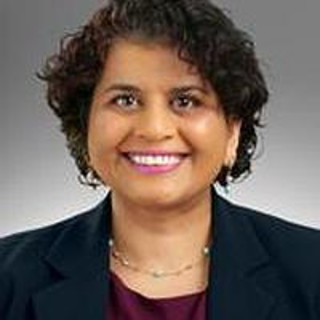With our recent foray into virtual meetings during the pandemic, we recently had an excellent — and now on-demand — Digestive Disease Week 2021. Of interest, the conference began with a symposium entitled “Using Virtual Reality in Your GI Practice.” Drs. Sravanthi Parasa and Irving Waxman discussed burgeoning investigations exploring the role of augmented reality, technologies that could allow the real-time use of audiovisual supplements from imaging and the medical record to assist with teaching, proctoring, and general clinical use. They also discussed the potential for computational technologies to help enhance the performance of procedures using practice-changing methodologies. Image processing and creation of algorithm-aided artificial intelligence (AI) may distinguish pathological from normal anatomy, and in the future, could identify tissue planes and help guide our dissections.
In a symposium on pancreatic cystic neoplasms, Dr. Walter Park discussed how combining AI in MRI, CT, and endoscopic ultrasound (EUS) could help improve our ability to diagnose high-risk intraductal papillary mucinous neoplasms (IPMN) harboring dysplasia and early cancers. Dr. Jigar Patel discussed ROSE-AId™ to help determine if a cytology sample obtained via EUS-guided FNA is adequate and diagnostic without a rapid on-site evaluation (ROSE) requiring a cytopathologist. A machine-learning algorithm was able to create a model based on a training data set of 400 FNAs and then validated with 77 benign and malignant slides. RoseAId™ had a high accuracy at correctly identifying malignant lesions, including neuroendocrine tumors (95%) and adenocarcinomas (90%). Dr. Sanne Hoogenboom discussed deep learning neural networks as a method to enhance the interpretation of CT images to better detect pancreatic cancers. Their algorithm detected 27-34% of missed cancers with specificity between 62-84%. All of these techniques could improve the capacity of establishing a diagnosis and decreasing the uncertainty in the management of these neoplasms.
Numerous innovations for advanced interventional endoscopic techniques were discussed in an SSAT symposium on endoscopic GI surgery. Dr. Emre Gorgun demonstrated endorobotic platforms for colonic endoscopic submucosal dissection (ESD). Dr. Norio Fukami discussed recent technical advances in endoscopic gastric surgery, including endoscopic full-thickness resection and submucosal tunneling endoscopic resection. In addition, Dr. Kenneth Wang demonstrated the use of articulating knives to perform ESD, as well as the use of the Endorotor device for indications including refractory Barrett’s esophagus and pancreas necrosis. The improvements in technologies will make complex endoscopic interventional procedures feasible and potentially the new standard.
Finally, the Pancreas Club and the Society for Surgery of the Alimentary Tract presented a debate on the value of arterial resection for locally advanced pancreas cancer. Dr. Mark Truty discussed their experience with arterial resections during pancreatectomy, including 40 superior mesenteric artery (SMA) resections. Limitations include an increased risk of hemorrhagic, ischemic, and infectious complications. Dr. Truty advocated maximal preoperative therapy to strategically increase the oncologic benefit, with proper selection taking account of characteristics including “responsivity, reconstructibility, and recoverability.” Dr. Ugo Boggi of the University of Pisa discussed the results of nearly 200 arterial resections, including 71 SMA resections. He noted that morbidity and mortality can be quite high and suggested arterial divestment as an alternative strategy. While both techniques bear controversy, with improvements seen with multimodal approaches to therapy of pancreas cancer, we are entering a new era where endoscopists and surgeons will continue to push the limits of practice among properly selected patients.
Illustration by April Brust







